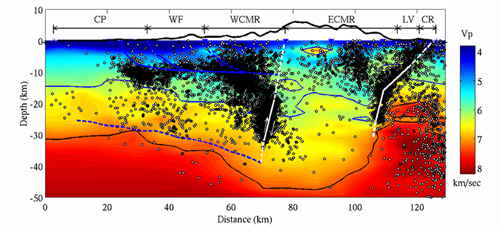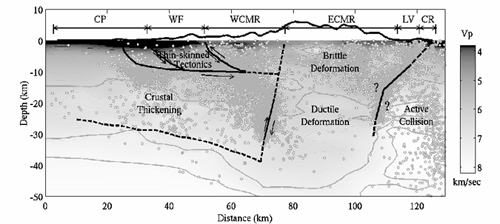Jer-Ming Chiu
More....
Professor Chiu’s research interests are focused on the analysis of high-resolution seismic array/network data to explore the internal structure of the Earth and their seismotectonic implications in local and regional scales. He has initialized a seismic instrumentation program at CERI to develop and build high-dynamic range, telemetered, portable seismic arrays including the 40-station PANDA array and the 30-station PANDA II array. Since 1984, he has engaged seismic array experiments using the PANDA and PANDA II arrays in various regions around the world including the central Arkansas (1984-1986), Argentina (1987-1989), the New Madrid region of central US (1989-1992), Hawaii island (1993), North Island of New Zealand (1993-1995), and central eastern and southern Taiwan (1995-1997). From 2003 to 2007, professor Chiu has focused on the seismological and earthquake hazard study using historical and local to regional earthquake data in the Korean Peninsula and high-resolution images of 3-D structure in Taiwan region and their tectonic evolution. Scientific targets for research works in these areas include 3-D geometry and internal structure of subduction zones, deformation and tectonic evolution of converging continental and oceanic plates, images of anomalous areas associated with geothermal and volcanic activities, images of active faults and their tectonic implications, images of blind faults beneath sedimentary basins, etc. Lately, he has also implemented a new technique for an efficient and reliable single earthquake location using 3-D Vp and Vs structural information of a region derived from a 3-D tomographic inversion or any other techniques. The improvement of earthquake relocations using a high-resolution 3-D Vp and Vs structural model is significant from the preliminary test of this technique in the New Madrid seismic zone and in the Taiwan region. He is also exploring the application of receiver function analysis of earth structure beneath seismic stations using nearby intermediate to deep depth earthquakes. Using converted waves fro the bottom the sediments and seismic reflection/refraction lines, he is currently working with the University of Kentucky exploration high-resolution 3-D Vp and Vs structure of the sedimentary basin in the upper Mississippi Embayment for the purpose of seismic hazard assessment and to enable the exploration of high-resolution crust structure and earthquake relocation of the NMSZ region. He is also developing research projects to (1) study high-frequency seismic wave propagation and internal structure inside subduction zones in Japan, Taiwan, and New Zealand regions. (2) explore crust and upper mantle structure and reliable earthquake relocation in the Korean Peninsula, and (3) conduct large-scale and high-resolution seismic array experiments in Taiwan and China.
P-wave velocity profile and relocated seismicity along an east-west cross-section in central Taiwan (top) and a preliminary tectonic interpretation for central Taiwan (bottom). The thickened crust beneath the Central Range is apparently bounded by two westward steeply dipping boundary faults as revealed by their associated seismicity. Between the two boundary faults, the continental crust is characterized by a high-velocity, high seismicity brittle upper crust and a low-velocity, aseismic and ductile mid to lower crust. Thin-skinned tectonics may explain satisfactorily the deformation of the upper crust beneath western central Taiwan whereas the eastern Central Range behaves as a backstop. Relative thin crust (~23 km) can be identified beneath the collision zone suture immediately to the east of the eastern boundary fault. Therefore, the elevated oceanic upper mantle beneath the suture zone may play an important role in providing excess heat to conduct into mid-to-lower crust beneath the Central Range that the deformed continental crust will experience high geothermal activity, thus aseismic and ductile deformation. The mid-to-lower continental crust will thus experience a gradual volumetric expansion that its density will be reduced and the Central Range will be uplifted between the two boundary faults.
Contact me for graduate research opportunities!


